By Janis D. Gioia, MAEd. and Elise C. Gioia
Back to school Covid anxiety is high, especially for children with anxiety, autism spectrum disorders and other special needs. This year, back to school is not back to normal.
After national shutdowns, schools around the country and across the world are starting to open, navigating in uncharted waters, in a combination of socially-distanced time in the classroom and remote learning.
Whether a child is in preschool or high school, things aren’t the way they were pre-pandemic, and this is causing a lot of anxiety.
In addition to typical back-to-school worries, children have new concerns: getting sick, wearing masks, and staying six feet away from their friends.
Signs your child might be anxious
Children express anxiety in a variety of ways, sometimes physically and sometimes behaviorally.
They may complain of upset stomachs or headaches. Some may express more irritability or acting out behaviors.
You can view or download Comforting Anxious Children’s Signs of Anxiety Checklist here. It gives examples of physical and behavioral symptoms you may see in your child, and possibly in yourself.
Adults are also feeling Covid anxiety. The good news is, despite our uncertainties, parents can do quite a bit to comfort anxious children and reduce their worries and anxiety about the new school year.
First: Talk to your child.
In a manner considerate of their age and developmental level, explain the changes this school year may bring. Class sizes may be smaller, some of their friends may go to school on alternate days, teachers and students may be wearing masks. For children with autism or sensory processing disorders there may be sensory issues involving the smells of disinfectants or frequent hand washing.
Then stop and listen.
Calmly address your child’s specific fears.
Many children want to know when things will go back to normal.
Dr. Brando Tupaz, a Clinical Psychologist and adjunct professor at John Carroll University in Cleveland, Ohio says, “Talk to your child at the appropriate developmental level, but be honest. We don’t know exactly how long this pandemic will last. But we do know that scientists and other professionals are working on treatments and a vaccine.”
Remember: Children want and need reassurance.
In our last article on Covid anxiety we discussed helping children take some control over their fears by making plans to be healthy, calm and positive.
Now we need to help children children adjust to this “new normal.”
Ways to support your child’s mental health during Covid:
Use Social Stories and picture books for Separation Anxiety and Social Distancing
Social stories about masks and social distancing are a great way to introduce these new concepts to little ones. Katie D’Fantis, LPCC, Certified EMDR Therapist and Music Therapist, suggests having children wear masks around the house. Her own children gradually increased the time they wore masks around the house, beginning with fifteen minutes and then increasing by five minutes every few days. DeFantis says, “Wearing masks at home develops their tolerance for wearing them and helps them get used to seeing themselves and each other in a mask. The more we as adults normalize the wearing of masks and social distancing, the better we can help our kids adjust.”
This article from the National Autistic Society explains how to write a social story.
Books to help little ones with separation anxiety and social distancing:
The Invisible String and The Invisible String Workbook by Patrice Karst and The Kissing Hand by Audrey Penn.
While We Can’t Hug by Eoin McLaughlin This link has a great video of the book.
What is Social Distancing? A Children’s Guide by Lindsey Coker Luckey
Here is a video from Sesame Street video on social distancing
*The videos (with asterisk) below are from “Incredible Years” and help little ones understand all the changes they are experiencing:
*What was confusing going back?
*Missing our Grown-ups again…separation anxiety after being home during Covid-19 shutdown
For older children, these informational videos from BrainPOP may help.
Make Masks Fun
Several readers shared how their children, with autism, have struggled not only with social regression during the shutdown, but also with an increase in self-injurious behaviors due to the anxiety of wearing masks and seeing others in masks.
Re-directing children with autism or anxiety and helping them focus on something positive is always helpful. Dr. Tupaz says, “We’ve got to wear masks anyways, so let’s make it fun. Maybe we can learn how to make masks or let kids make a mask with a superhero…we can make it positive and a growth experience.” Tupaz says he’s heard of families who have never sewed before, learning together, to make masks as a family. Instead of being scary, masks become a family project, and fun way to spend time together.
For little ones, consider having your child’s favorite stuffed animal or doll wear a mask too.
*Video: Why are my teachers wearing masks?
Video: Good Housekeeping’s instructions on how to make masks for kids.
Books to help with wearing masks:
A Little Spot Wears a Mask by Diane Alber
Lucy’s Mask by Lisa Sirkus Thompson
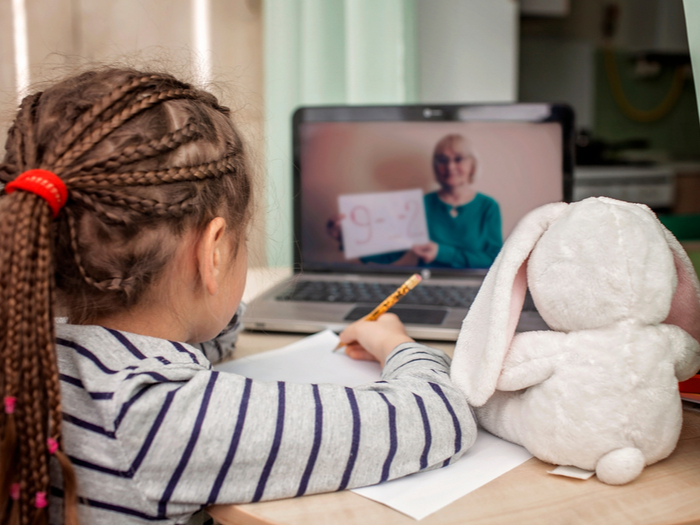
Get Accommodations
Wearing masks, especially for long periods of time, is uncomfortable and can cause anxiety. Joanna Gioia, LISW-S, Assistant Vice President/Executive Director of OhioGuidestone, says, “I have seen new accommodations being used. Some parents have requested Plexi-glass around their child’s desk so their child with special needs does not have to stay in a mask all day, especially when there are sensory-sensitivity concerns.”
Remote learning can cause high-anxiety. For older students, the anxiety is often centered around technology-based learning and skills they may not have, as well as the social anxiety surrounding being on cameras.
A high school senior with special needs in Streetsboro, Ohio says, “My anxiety comes from the fact that we are not in school long enough to focus and get help. When we have to do work from home, we don’t have the same kind of help.”
A middle school student with social anxiety in Denver, Colorado, gets panic attacks before her Zoom classroom. “I am shy to talk on camera. My face gets red and then I stutter and get more nervous. Being on camera makes me feel sick every morning.”
Accommodations for students like these may be in order. Joanna Gioia says, “For remote learning, some teachers have allowed students with high anxiety to not have their face on the screen. Most schools require cameras to be “on.” If a child has severe anxiety, seeing themselves on camera may be increasing their anxiety and making them less confident, since everyone is looking at them too.”
“It is harder for a student with anxiety to answer a teacher when everyone is looking right at them on a Zoom call. So, some teachers will allow the camera to face the ceiling, but let the student express their active participation by using the “thumbs up” icon to “like” things that others are saying, or use the “chat” feature to participate in group discussions.”
Talk to your child’s teacher or the special education director in your district to develop a plan for your child.
Establish New Routines
Routines are important for all children, but especially those with autism spectrum disorders. When routines are disrupted, Dr. Tupaz suggests finding creative ways to get children “hooked” into the new way of doing things. Adapting to a new or rotating schedule (in-school and at-home learning,) may require more than just a new visual calendar.
“A way to help children adopt something new or make a big switch is to tap into sensory input,” says Dr. Tupaz. “For example, if the child needs to adjust to a rotating schedule, something new, match that with an enjoyable sensory input.” One way to do this, according to Dr. Tupaz, is to allow the child to squeeze a stress ball, play with a fidgit spinner, listen to music, or use a scented candle (with supervision).”
Sensory input allows the child to associate the new routine or learning modality with something pleasurable. Even something as small as having your child’s favorite stuffed animal sit with them while they do online school may be especially calming. Comfort items ease separation anxiety as well as fears associated with doing new things.
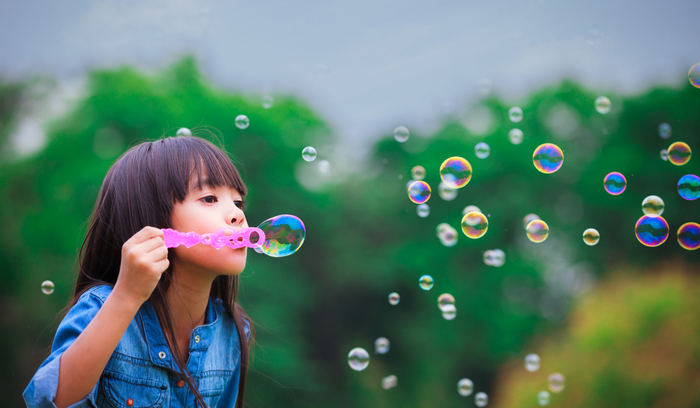
Create Calming Rituals
All children need predictable routines. Routines are familiar and they make us feel safe, especially in these uncertain times. Although it is easier said than done, try to keep your child’s bedtime and morning wake-up routines the same.
Like routines, rituals are a daily practice, but they are intentional and meant to bring a sense of peace and harmony into the day. A soothing ritual might be using aromatherapy at bath time or listening to a special song when getting ready for school. A calming ritual before or after school might be blowing bubbles and watching worries float away.
Even though you may be working form home and trying to manage remote learning, try to spend time doing fun things with your children: reading before bed, taking a nature walk or continuing with family game nights. Activities like these, that children enjoyed before the pandemic, are comforting because they are familiar. Family time relaxes children.
Comforting Anxious Children can help you:
Create Soothing Rituals for Children with Anxiety and Autism
Begin a Meditation Practice for Anxious Children
Use Essential Oils for Children with Anxiety and Autism
Help the Anxious Child Go Back to School
We hope these resources help your children as they go back to school. These are unprecedented times, but we will get through them and come out on the other side. We wish you and your family health, happiness and comfort.
Peace, Jan and Elise

By signing up, you’ll also receive your free guide with 20 ways to comfort your child…mind, body and spirit.

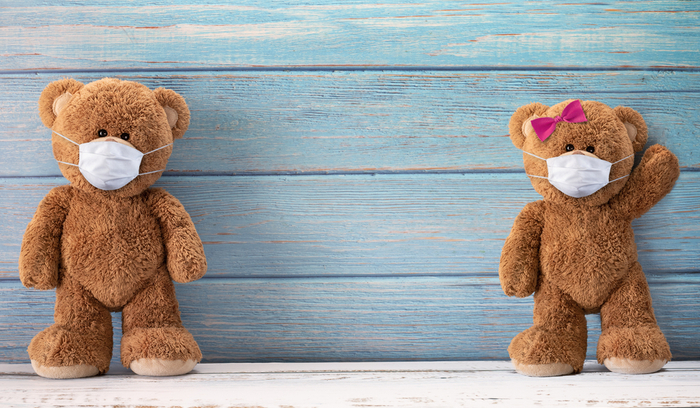
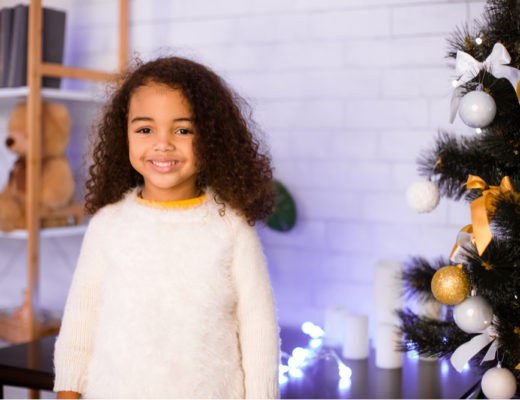

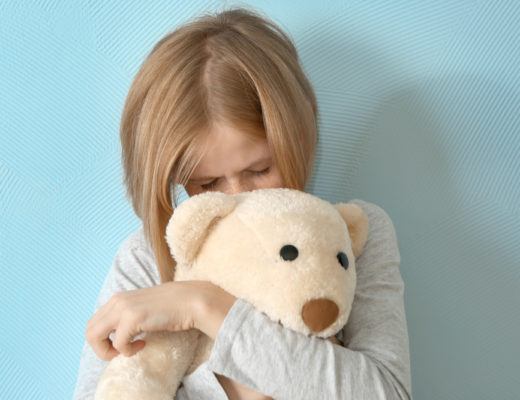

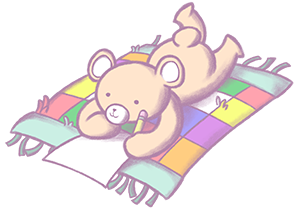
 in Ohio
in Ohio
No Comments